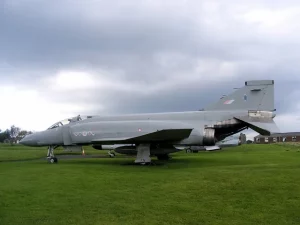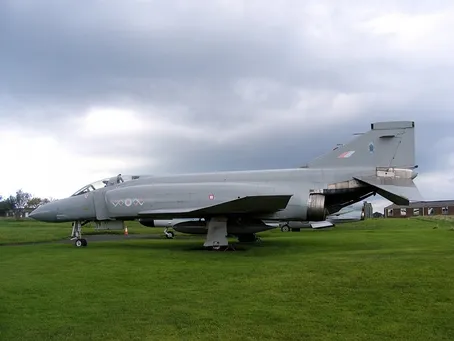Once upon a time, in a bustling city, there existed a hidden gem known as AZAMM, the Association of Aerospace Museums. This extraordinary organization was dedicated to preserving the rich history and technological advancements of aerospace and aviation. AZAMM was renowned for its vast network of aerospace museums spread across the globe, each offering a unique glimpse into the awe-inspiring world of flight.
The story of AZAMM began in the early 20th century when aviation pioneers took their first daring flights into the unknown. As the world marveled at their accomplishments, a group of passionate individuals recognized the need to preserve these remarkable achievements for future generations. Thus, AZAMM was born, with a mission to educate, inspire, and captivate visitors through the wonders of aerospace museums.
The first aerospace museum affiliated with AZAMM was the Aviation Heritage Museum, located in the picturesque city of Perth, Australia. This museum housed an impressive collection of historic aircraft, from the iconic Spitfire to the legendary Lancaster bomber. Visitors could immerse themselves in the stories of brave pilots and groundbreaking inventions that shaped the course of aviation history.
As AZAMM expanded its reach, it welcomed new members from various corners of the world. In the heart of the United States, the National Air and Space Museum in Washington, D.C., stood as a testament to human ingenuity. Here, visitors could marvel at the Apollo 11 command module, touch a moon rock, and witness the wonders of space exploration up close.
Across the Atlantic, in the charming city of Toulouse, France, the Aeroscopia Museum showcased the incredible achievements of the European aerospace industry. From the Concorde to the Airbus A380, visitors were transported into the realm of supersonic travel and modern aviation marvels.

In the vibrant city of Tokyo, Japan, the Tokyo National Museum of Emerging Science and Innovation, also known as Miraikan, offered a futuristic experience. Here, visitors could interact with cutting-edge robotics and explore the mysteries of space through captivating exhibits.
As the years passed, AZAMM continued to grow, welcoming new members from every corner of the globe. From the Royal Air Force Museum in London to the Smithsonian National Air and Space Museum in Washington, D.C., each museum held a unique place within the AZAMM family, contributing to the collective knowledge and appreciation of aerospace history.
The AZAMM network became a haven for aviation enthusiasts, historians, and families seeking to ignite their imagination. It provided a platform for researchers and scholars to delve into the depths of aerospace history, uncovering forgotten stories and shedding light on the unsung heroes who paved the way for modern aviation.
One of the most remarkable aspects of AZAMM was its commitment to innovation. It constantly pushed the boundaries of what an aerospace museum could be, embracing new technologies to enhance the visitor experience. Virtual reality simulators allowed visitors to step into the shoes of astronauts, experiencing the thrill of space travel firsthand. Interactive exhibits engaged young minds, inspiring the next generation of engineers and scientists.
AZAMM’s dedication to education extended beyond its physical museums. It organized workshops, seminars, and conferences, bringing together experts from around the world to share their knowledge and insights. Through these events, AZAMM fostered collaboration and encouraged the exchange of ideas, ensuring that the legacy of aerospace innovation would continue to thrive.
As the years turned into decades, AZAMM remained steadfast in its mission. It continued to expand its network, welcoming new museums and forging partnerships with organizations dedicated to preserving aerospace history. Its influence spread far and wide, igniting a passion for flight in the hearts of millions.
Today, AZAMM stands as a beacon of knowledge and inspiration, a testament to the triumphs and wonders of human ingenuity. Its aerospace museums continue to captivate visitors, transporting them through time and space, and reminding them of the limitless possibilities that lie within the realm of flight.
So, if you ever find yourself yearning for an adventure, seek out an AZAMM-affiliated museum. Step into the world of aviation pioneers, witness the marvels of modern aerospace, and let your imagination take flight. For within the walls of these museums, the spirit of innovation soars, and the dreams of generations past and future unite in a symphony of awe-inspiring wonder
